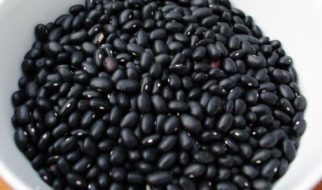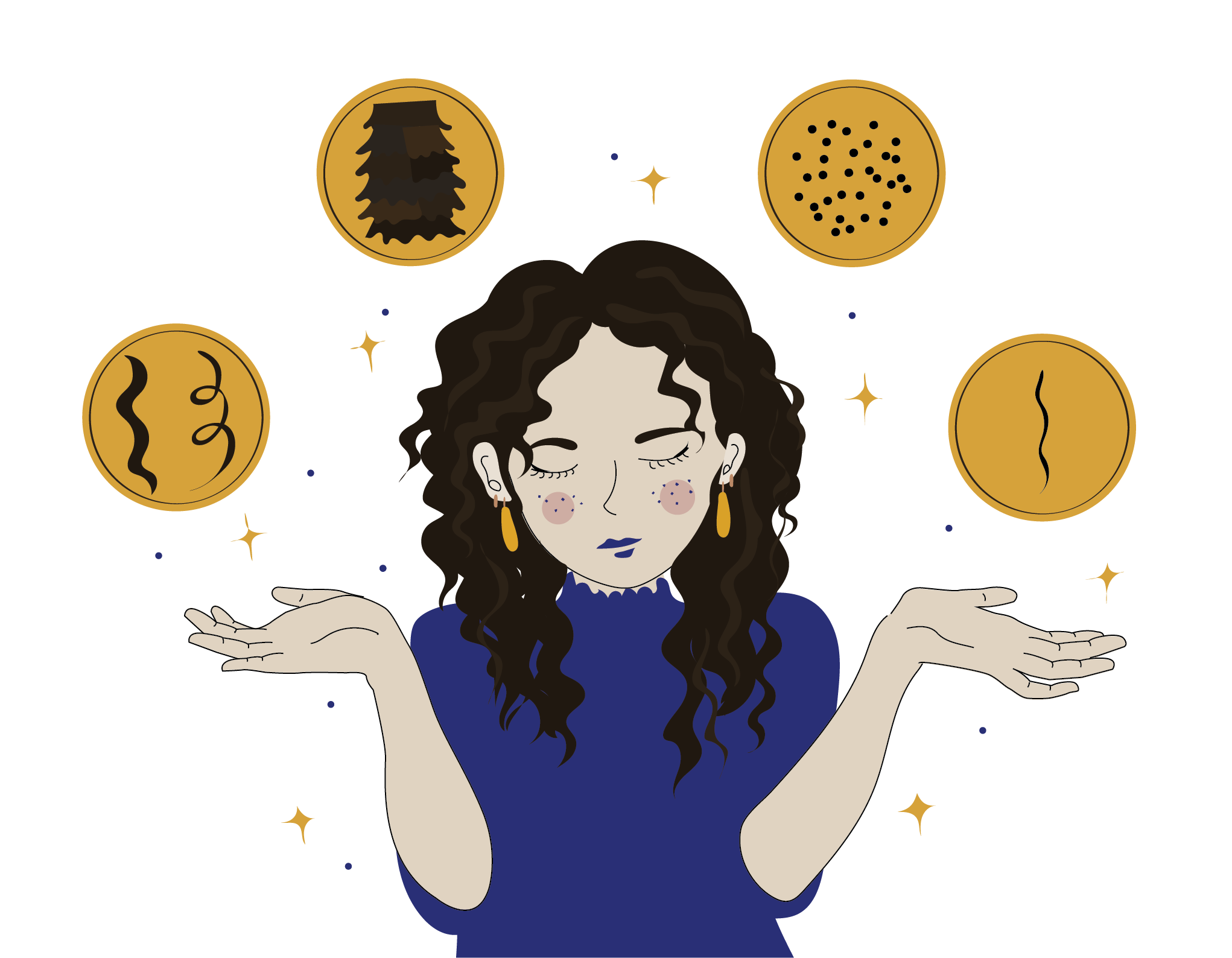 My Curl Profile.
My Curl Profile.
In the past few years of obsessively gathering wisdom from curly hair blogs, watching curly haired vloggers and reading curly hair literature, one of the most important things I have noted from all these resources is that one must take personal responsibility of ?knowing-thy-curl-type?. What?! Not all curls are the same? Oh, me of the past, you have a lot to learn. The products you use, the regularity of your washes and even how you wash will depend on what profiles you fall under in these four key categories:
- Curl Pattern
- Hair Porosity
- Hair Density
- Hair Width
1. Curl Pattern
Curl pattern is essentially the shape of your curls. It is best to determine this category when your hair is wet. Wave/Curl types have a spectrum from 2 to 4 with a sub-classification of A-C.
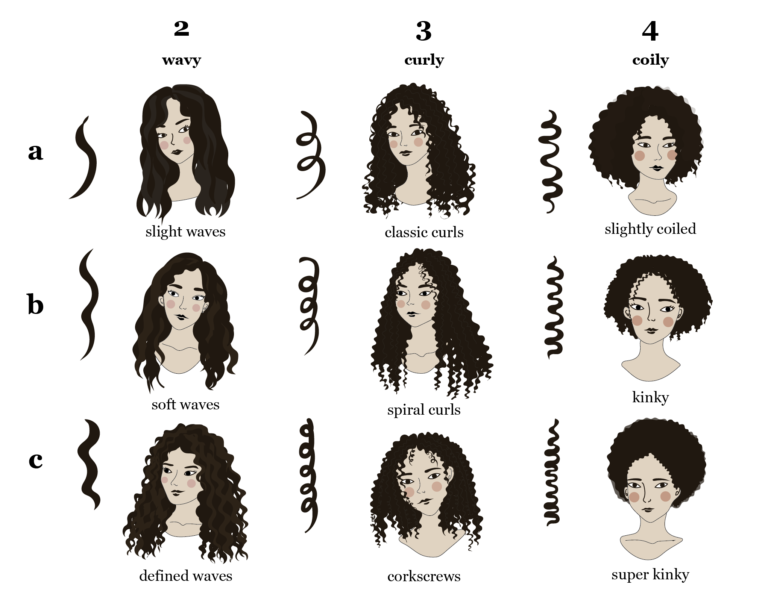 Curl Pattern.
Curl Pattern.
2 = wavy, 3= curly and 4 = coily.
A = wider diameter, B = medium diameter, C = smallest diameter.
Interestingly, I started off with 2B waves and then as a result of proper care and routine, my curl pattern has tightened into a 2C / 3A category.
2. Porosity
Porosity is your hair?s ability to absorb and retain moisture, oils, or chemicals i.e. color dyes. It is determined by the state of the outer layer of hair (the cuticle) that essentially controls how easily moisture and oils pass in and out of your hair. Porosity is largely influenced by genetics but it can also be affected by external factors such as exposure, heat treatments and chemical processing. Knowing your hair?s porosity can help you choose the right products to keep your hair well-moisturized, supple, strong and shiny.
There are two methods you can use to find out the porosity of your hair:
1. The Float Test: Take a couple of strands of hair, drop them into a bowl of water and let them sit for about 5 mins. If your hair floats, you have low porosity. If the hair sinks slowly, it means the hair has normal porosity. If it sinks, you have high porosity.
2. The Slip?n?Slide Test: Take a strand of hair and slide your fingers upward. If you feel little bumps along the way, this means that your cuticle is lifted and that you have high porosity. If your fingers slip smoothly, then you have either low or normal porosity hair.
There are three types of porosity: low, normal and high.
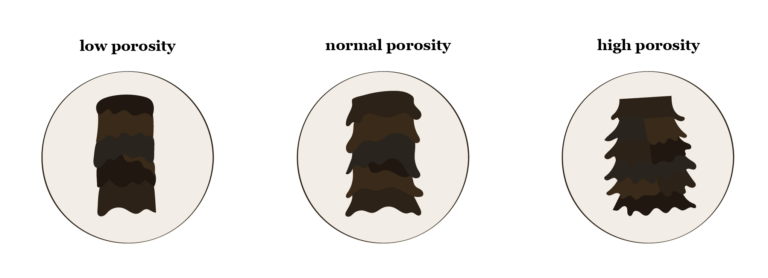 Hair Porosity.
Hair Porosity.
Low Porosity: Featuring a cuticle layer with overlapping scales that lay flat, low porosity hair repels moisture when you try to wet it. While this is generally a good thing, the nature of low porosity hair means that is more difficult to process if you ever want to experiment with colours etc. as it naturally resists the penetration of chemicals. For everyday care, it is best to use lighter, liquid based products such as hair milks as well as protein-free conditioners with humectants in order to prevent product build-up that leaves hair feeling either greasy or stiff.
Normal Porosity: Normal porosity is the Goldilocks standard of hair porosities. With a cuticle layer that is looser than low porosity hair, it permits just the right amount of moisture to enter and escape the hair shaft. This means that hair with normal porosity holds styles well and can be predictably processed with colours and perms. While medium porosity hair holds an understandable reputation for requiring the least amount of maintenance, it is recommended to occasionally include deep conditioning treatments in order to prevent damage from over processing.
High Porosity: Prone to frizz, frequent breakage and dread even the thought of humid climates? You probably have high porosity hair. Either as a part of you hair?s inherent property or the result of damage from chemical processing, overuse of heat tools, general rough treatment or even from the environment, high porosity hair features gaps and holes in the cuticle which allows too much moisture into your hair shaft. Everyday acts such as shampooing, bathing and swimming can create more damage to high porosity hair due to the sheer amount of moisture able to be absorbed in these activities. In addition to avoiding chemical processing and heating tools high porosity hair can be managed by layering leave-in conditioners, moisturisers and sealants, as well as using anti-humectants in climates with high heat and humidity. The aim of these habits and products is to seal damaged cuticles, prevent them from absorbing excess moisture in the air as well as the prevention of losing too much moisture.
Ever since puberty, high porosity hair has been a constant companion to my curly hair. While I do think it is partially genetics, I also realise the some of it has to do with years of chemical straightening and perhaps regularly swimming since the age of 3, as well as general improper care over my formative years including the almost daily use of heating tools, brushing it all the time, drying with a hair dryer and regular towel and using chemically laden products.
3. Density
People often confuse hair density with hair width: calling people with low density hair ?thin haired? while calling people with high hair density ?thick haired?. In fact, hair density refers to how closely hair strands are packed together on your head, i.e. the number of hair strands that you have per square inch on your scalp. It can be understood as the natural volume of your hair. Knowing the density of your hair allows you to choose products to either increase or tone down hair volume. Rather than individually counting the number of hairs per square inch on your head, here are two alternative methods of figuring out hair density:
1. Can you see your scalp? Without parting your hair, let it hang loose, and have a look at yourself in the mirror. If you can see your scalp without moving any hair, you most likely have low hair density. If you can see your scalp with some effort then you most likely have medium density. If it?s hard to see your scalp at all, you have high hair density.
2. Measure your ponytail. Tie your hair up and measure the circumference of the ponytail. Less than two inches (5cm) equates to low density, between two to three inches (5?7cm) means medium density while anything around four inches (10cm) is considered high density.
 Hair Density.
Hair Density.
Low Density: People with low density hair usually aim for more volume. The best products to achieve fuller hair include light products that won?t weigh your hair down such as mousses, dry shampoos, volumizing shampoos and volumizing conditioners with thickening agents.
Medium Density: Medium density hair owners can decide to be flexible with volume depending on their preference. Products or particular cuts can be employed to either enhance natural volume or give hair more structure.
High Density: If your hair density is high, it?s most likely that you are aiming to tone down your natural volume. Cutting you hair in soft layers works well for people with high density hair as well as using heavy products such as gels, creams and butters to hold your curls together and reduce the ever-expanding lion mane look. Unless that is the look you love. In which case, go you.
I have high density hair. Whenever I go to the hairdresser, they without fail mention something about how much hair I have. I literally used to apologise to hair dressers when I got my hair cut or processed because of the sheer amount of hair I was putting into their hands. Nowadays the only apology goes to my shower drainage system.
4. Width
Hair width is the final frontier of hair categories that I didn?t know about until quite recently. Like I mentioned in the paragraph about hair density, people often call high density hair ?thick? while calling low density hair ?thin?. I was always quite confused by this as while I was told that I had ?thick hair?, I felt that I actually had very thin, delicate individual hairs. I was enlightened to know that hair width was a thing and that there are subtle ways to treat fine width hair that needs to be mediated with the other characteristics of your hair. There are three types of hair widths:
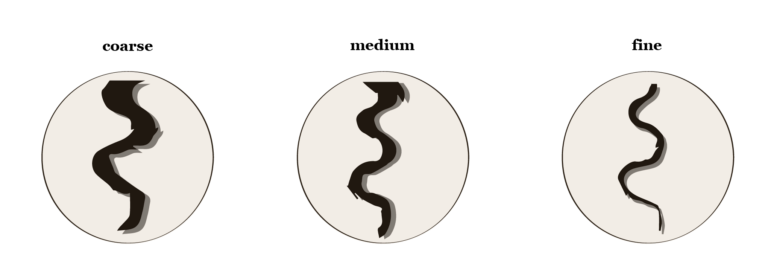 Hair Width.
Hair Width.
Coarse: Coarse hair means that the strands of hair are very wide in circumference. This means that it is the strongest of all the hair textures making it easier to maintain length as it is more resistant to damage / breakage.
Medium: Medium width hair consists of strands that are strong and elastic, neither too thin nor too thick. Medium width hair also makes it easy to maintain length as it is somewhat resistant to damage.
Fine: Fine width hair has a small circumference and is therefore delicate and prone to damage and breakage. As a result, people with fine hair often find it difficult to maintain length. Similar to the maintenance required for high porosity hair, fine hair benefits from deep conditioning as well as minimising the manipulation of your hair by reducing your use of combs and brushes and steering clear of tight, elaborate hairstyles.
Once I realised I had fine hair, I began to understand why it is so difficult for me to grow out my hair! It didn?t stop me from regularly tying up my hair but it did teach me to only brush my hair when it is coated in conditioner in the shower as well as using more delicate hair ties such as velvet scrunchies. I haven?t found a good deep conditioner to use on my hair just yet but this is also something that I will be looking into as well.
So, there you go! Four categories of hair that in combination, generate your own unique hair profile. If my summary was unclear at any point, check out the following links for more eloquent writers on the inter-web that I have personally used to figure out my own hair identity: Naturally Curly Quiz, Naturally Curly Article and Curls Article.
When I first learnt about these different categories of hair, I slotted myself into a strict identity of 2B, high porosity, high density and fine width hair. However, I found that these categories are not fixed: they can change over time (either from damage or nourishment) or even vary within the radius of a single head (top hairs can be different to bottom hairs). Over my own journey, I have found that while the porosity and density of my hair has been fixed, proper care and a good cut transformed my curl pattern to be slightly tighter in the 2C/3A curl type zone. ? So far, the most important tip I have accumulated for people with a similar combination to mine is that our hair loves and needs moisture. Everything I try and do with my hair is either to replenish moisture into my hair (think leave in conditioner and water based creams) or to retain that moisture in the hair (think gel). Generally speaking, my hair profile is high maintenance and while it is often a pain in the butt to manage, I also realise that not giving it the proper care means it will only get worse and require more maintenance in the future! I have found that the combination of my hair qualities is quite rare even in the curl / wave community so if you have the same or similar hair profile, first of all, a deep virtual hug to you: hopefully all of the products and routines on this blog will be applicable to you personally! Secondly, please feel free to reach out and comment with your own experiences, products and routines. I am constantly learning about how to optimise and care for this high maintenance mop on my head and appreciate any relatable experiences very much!
Even if we have completely different hair characteristics, hopefully by the end of this post, you will better know your own unique profile. Knowing the identity of your curls not only helps with how you will treat your hair but also the people you take inspiration from. When you discover the unique combination of your own hair type, keep this blueprint in mind when you look for hair product recommendations and hair inspirations from fellow people of the curly hair community!
mlc.x
All illustrations on this article were created by the author. For more information and works, visit miche.nz or follow my journey on instagram.


